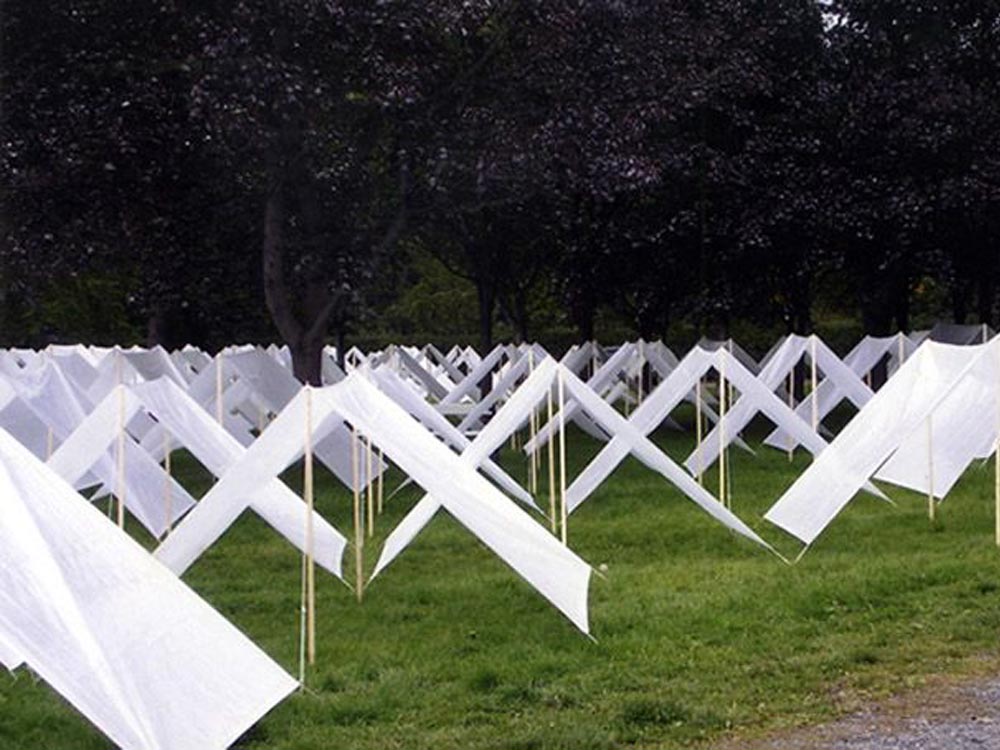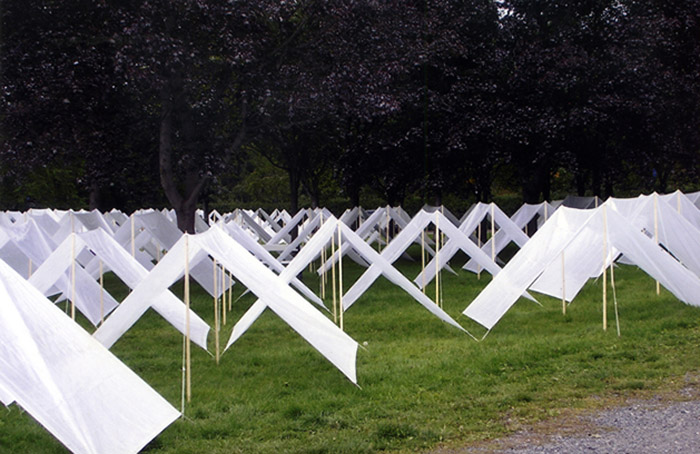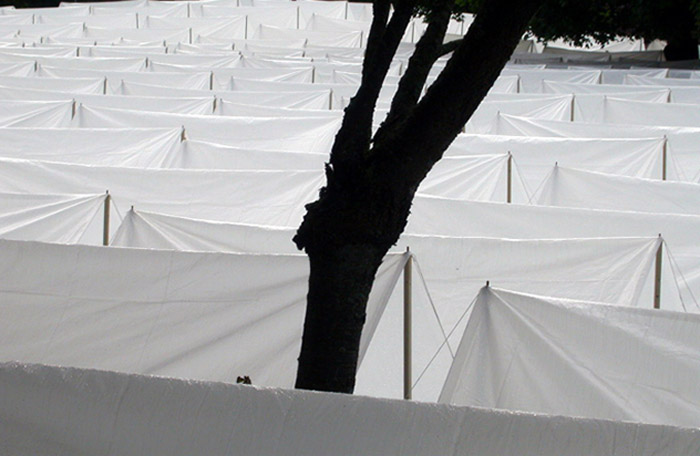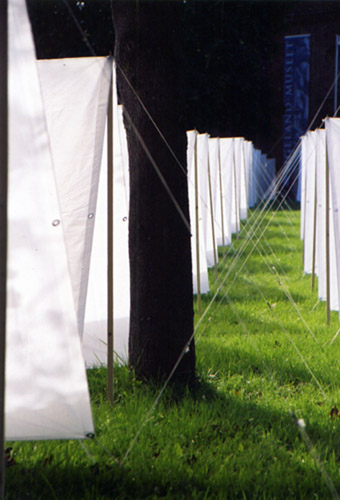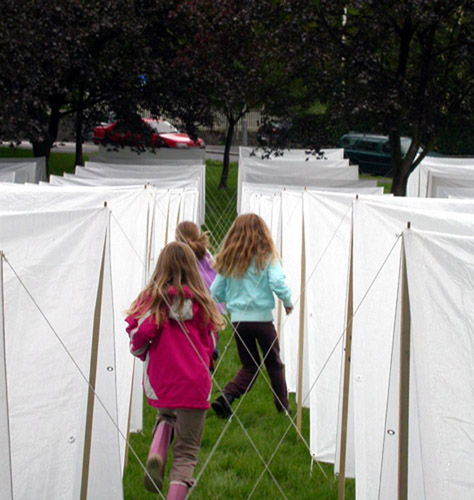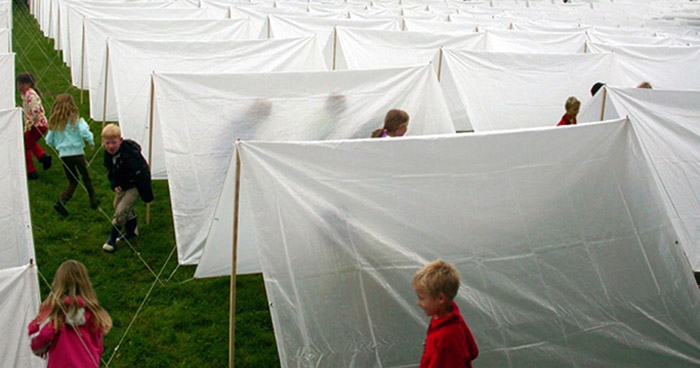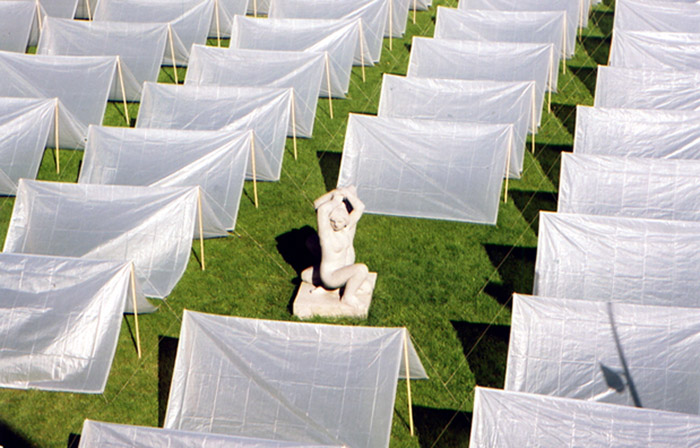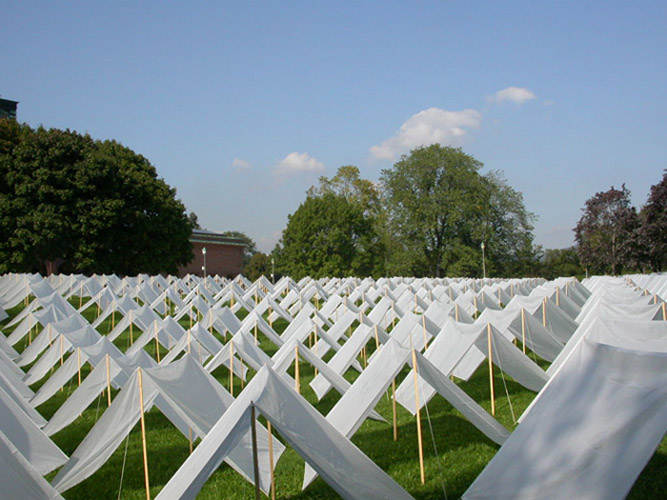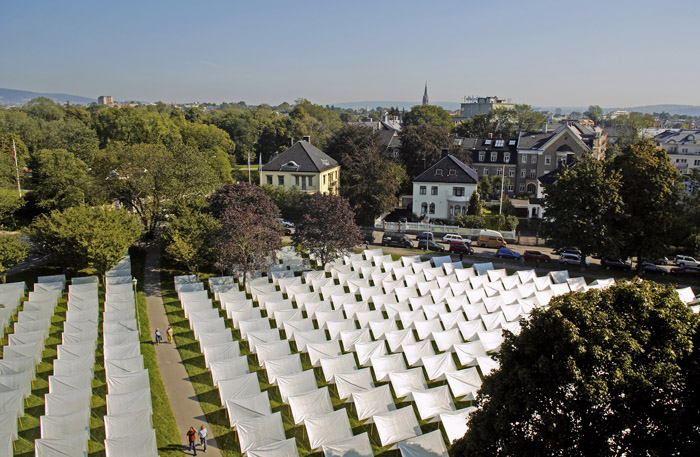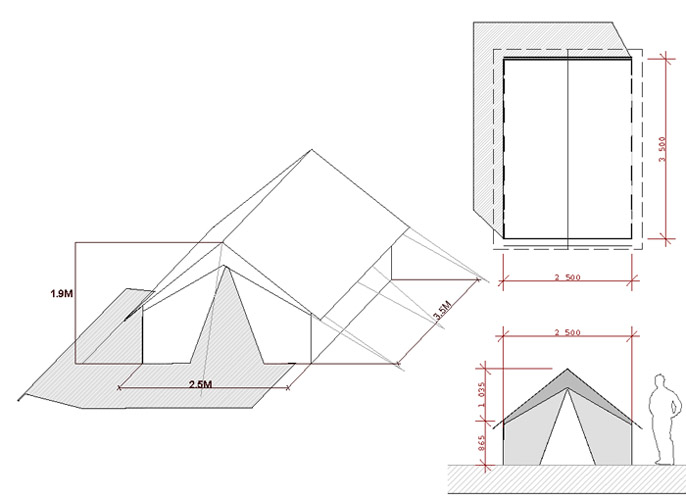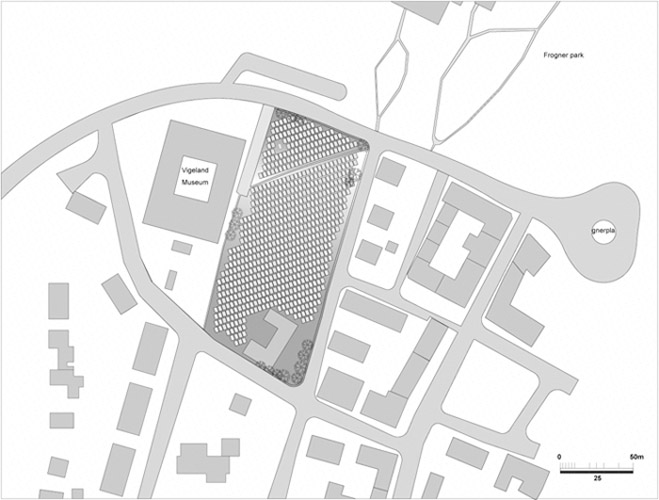Previous state
Created by the Norwegian sculptor Gustav Vigeland between 1907 and 1942 under commission from the Oslo City Council, the park that bears his name is one of the most city’s popular public spaces. It occupies some 320 hectares in the northeast of the city, within another major park known as Frognerparken and it houses, in a permanent open-air exhibition, the 212 works that Vigeland sculpted between 1926 and 1942. In the southern end of the park is the Vigeland Museum and in front of that is a rectangular field of 12,000 square metres.
Aim of the intervention
In keeping with the artistic vocation of the park, the idea was to place in this field a temporary installation called “No Comment”, the project being sponsored by the Vigeland Museum, the Norwegian Red Cross and the Association of Norwegian Sculptors. Covering nine thousand square metres, the intervention cost a little over six thousand euros.
Description
The installation raised 500 identical white tents, organised into a set of 31 parallel rows in a slanting direction vis-à-vis the field’s rectangular perimeter. The rows were broken wherever there was a physical obstacle such as a tree, a building or one of Vigeland’s sculptures. The tents were of white plastic and each one, of a height of 1.9 metres, occupied a rectangle of 2.5 by 3.5 metres. Some of them were lit within at night as lanterns, which made them look as if they were inhabited. When the installation came to an end, the tents were recycled for Red Cross humanitarian missions.
Assessment
In occupying a normally empty physical space, “No Comment” represented a physical interruption and suspension of time in this space. The intervention contradicted the spatial structure of the field that housed it, establishing new patterns of circulation that eliminated its own routes and contravened people’s perceptions of its usual scale. However, paradoxically, the operation of abolishing the public space in this way had the effect of enhancing it. Somehow, public space was made present in its absence.
The orderly encampment of tents was also a metaphor for the urban reality, an analogy for the occupation of territory with a series of residential units that constitute a whole. The efficacy of the metaphor lies in the fact that, in this case, the occupied territory is public space and this gives rise to reflection on the voracity of the construction-boom mentality and people’s contempt for public space, which is understood as unprofitable emptiness. From this standpoint, the tents are an expression of the most economical form of shelter available on the market, while the neighbourhood in which they were raised has the most exorbitant land prices in all Oslo.
David Bravo Bordas, architect
[Last update: 28/09/2020]


